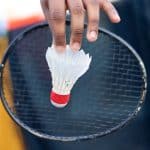In the dynamic world of sports, the need for agility and quickness has never been more paramount. This is particularly true for badminton players, where these attributes are key to their performance. As we delve into the nuances of training, our focus will be on the most effective methods to improve agility and speed in these athletes. The spotlight will be on plyometric exercises, cone drills, agility ladder exercises, strength training, and sprint workouts. Let’s embark on this journey of discovery together.
Plyometric Exercises for Power and Speed
Plyometric exercises are an indispensable part of badminton training. These activities play a crucial role in enhancing players’ speed, power, and agility. They involve an array of jumping, hopping, and bounding movements that train the muscles to contract rapidly, thus improving power and speed.
Also to discover : What’s the Best Foot Strike Pattern for Reducing Knee Stress in Distance Runners?
A study conducted on athletes revealed that plyometric training significantly improved their jump height, agility, and sprint times. For badminton players, this could mean faster movements, higher jumps, and more powerful smashes.
One of the most effective plyometric drills for badminton players is the box jump. This exercise increases leg power and promotes quickness. To execute it, you require a sturdy box or raised platform. Stand facing the box, lower into a squat and then explode upwards, landing softly on the box using your whole foot. Step back down and repeat.
Have you seen this : How Can Multidirectional Speed Training Improve Field Hockey Goalkeepers’ Performance?
Cone Drills for Agility and Quick Reaction Time
Cone drills are another proven way to improve agility and quickness in badminton players. These exercises require athletes to navigate a series of cones in various patterns, promoting agility, speed, and rapid directional changes; essential skills for superior court performance.
The ‘T-Drill’ is an excellent cone exercise worth your while. It involves sprinting forward to a cone, sidestepping to another, then reversing the movement. This drill mimics the lateral and forward-backward movements common in badminton, making it a practical training option.
Remember, quickness in badminton is not just about physical speed. It also encompasses decision-making speed and reaction time. Cone drills can help enhance these aspects by requiring you to react quickly to directional changes.
Agility Ladder Exercises for Enhanced Footwork
Footwork is a foundational component of badminton. Adequate footwork allows you to reach the shuttlecock faster and maintain balance for the next shot. Agility ladder exercises are an excellent way to improve footwork, agility, coordination, and speed.
The ‘Two Feet In Each Square’ drill is a simple yet effective ladder exercise. It involves quickly placing both feet in each ladder square while maintaining a constant rhythm. This exercise can increase lower body speed and agility, which are essential for good footwork.
Agility ladder exercises not only enhance agility and quickness but also improve cardiovascular fitness, which is crucial for badminton’s fast-paced nature.
Strength Training for Power and Stability
Strength is a critical attribute for badminton players. It provides the power for smashes, stability for lunges, and endurance for long matches. By incorporating strength training into your routines, you can significantly enhance your performance.
Core strengthening exercises like planks, bridges, and Russian twists are beneficial for badminton players. A strong core provides stability, supports efficient movements, and reduces the risk of injuries.
Leg strength is equally important as it powers jumps and lunges. Squats, lunges, and deadlifts are great exercises for building leg strength.
Don’t underestimate the importance of upper body strength. It’s essential for powerful smashes and controlled net shots. Shoulder presses, bench presses, and pull-ups can aid in developing upper body strength.
Sprint Workouts for Speed and Stamina
Lastly, sprint workouts are vital in a badminton player’s training program. They improve speed, build stamina, and enhance agility.
Sprints can increase your anaerobic threshold, which is crucial for quick, explosive movements in badminton. They also train your body to recover quickly between bouts of intense effort, similar to the stop-start nature of a badminton match.
Sprint workouts can be as simple as sprinting a short distance, resting, and repeating. Or they can be more complex, like hill sprints or interval training.
Remember, improving agility and quickness is not an overnight journey. It requires consistent, well-rounded training that includes plyometric exercises, cone drills, agility ladder exercises, strength training, and sprint workouts. With time, these efforts will pay off in improved court performance and game dominance.
The Benefits of Plyometric Training for Badminton Players
Plyometric training is a key aspect of training for badminton players aiming to improve their agility and quickness. This training modality focuses on explosive movements that mimic the rapid, high-energy actions performed in badminton.
This form of training has been scientifically proven to enhance agility and speed. For instance, a study published on Google Scholar demonstrated that a 12-week plyometric training program significantly improved speed agility and broad-jump performance in a control group of badminton athletes. These results suggest that plyometric exercises can considerably boost a player’s explosive power, enhancing their overall court performance.
Plyometric training can involve a variety of exercises. One popular exercise among badminton athletes is the box jump. In this exercise, the player stands in front of a sturdy box, lowers into a squat position, then jumps onto the box, landing gently using their whole foot. This exercise trains the leg muscles to contract rapidly, thereby improving power and speed.
The Role of Strength Training in Enhancing Agility and Speed
Strength training is another crucial component of a badminton player’s training program. This focuses on building muscle power and stability, both of which can contribute to increased agility and speed. Strength training can target various muscle groups central to badminton performance, including the core, legs, and upper body.
A strong core is crucial for maintaining stability and facilitating efficient movements on the court. Exercises such as planks, bridges, and Russian twists can be employed to strengthen the core muscles. In addition to providing stability, a strong core can also help reduce injury risk, thus ensuring that athletes can sustain high levels of performance over time.
Leg strength, on the other hand, powers explosive movements such as jumps and lunges. Squats, lunges, and deadlifts are excellent exercises for building leg strength. Meanwhile, upper body strength can impact the power of smashes and the control of net shots. Shoulder presses, bench presses, and pull-ups are recommended for developing upper body strength.
In Conclusion
To maximize agility and quickness in badminton players, a comprehensive approach to training is necessary. This includes plyometric exercises for explosive power, cone drills for agility and quick reaction times, agility ladder exercises for improved footwork, strength training for power and stability, and sprint workouts for speed and endurance.
According to research, consistent plyometric training for 12 weeks can significantly enhance speed agility and broad jump performance in badminton players. Similarly, a control group of badminton athletes who undertook a regular strength training program showed improved court performance.
While the journey to improved agility and quickness is not an overnight process, a consistent and well-rounded training program can eventually lead to improved court performance and game dominance. The investment in time and effort into such a program will undoubtedly pay off, paving the way for greater success on the badminton court.











